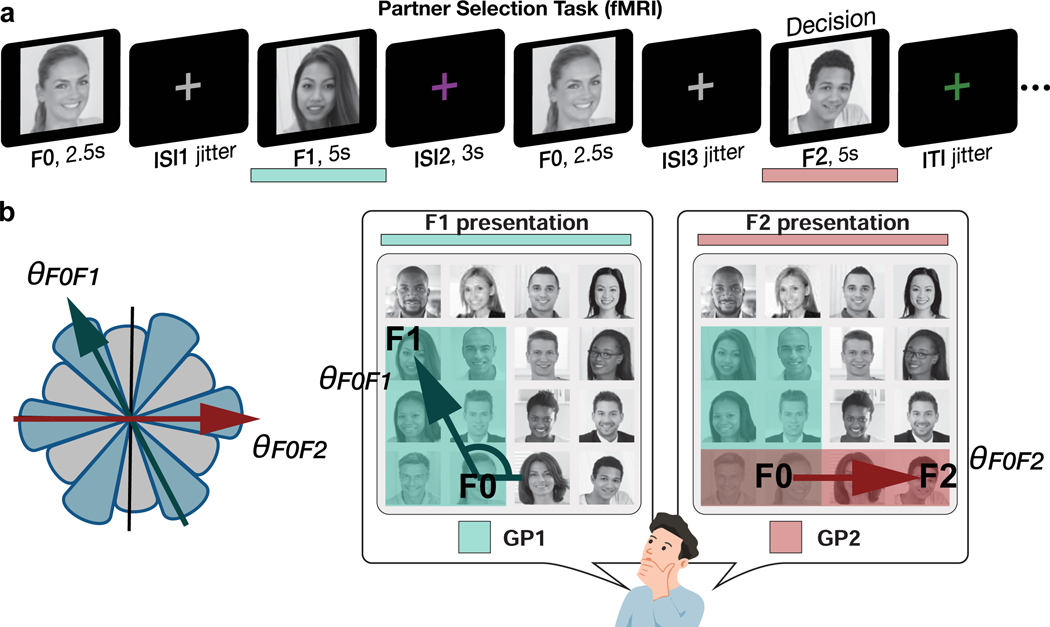Figure 2. Partner Selection task.
a. Illustration of a trial of the partner selection task during fMRI. Participants were asked to make a binary decision by choosing a better business partner for a given individual (F0) between two (F1 and F2). The better partner is determined by the “growth potential (GP)” that each pair could expect from their collaboration. Participants could compute the GP of the F0 and F1 pair when F1 is shown and GP of the F0 and F2 pair when F2 is shown. Participants were subsequently asked to make a decision during F2 presentation. No feedback was given. b. To compute the GP of a pair, participants were instructed the GP corresponds to the higher “rank of the pair” in each dimension. Participants were further asked to weigh the ‘rank of the pair’ in both dimensions equally. Therefore, the GP corresponds to the area drawn by the higher rank of the two people in each dimension in the 2-D hierarchy ( (green rectangle) > (red rectangle); F1 is the better partner for F0 in this example). We hypothesized people would infer direct trajectories over the mentally reconstructed 2-D space between the positions of F0 and each potential partner, F1 and F2, to compute the GP for each collaboration. We searched for neural evidence for hexadirectional modulation of inferred trajectories though the reconstructed cognitive map ( at the time of F1 presentation and at the time of F2 presentation).

